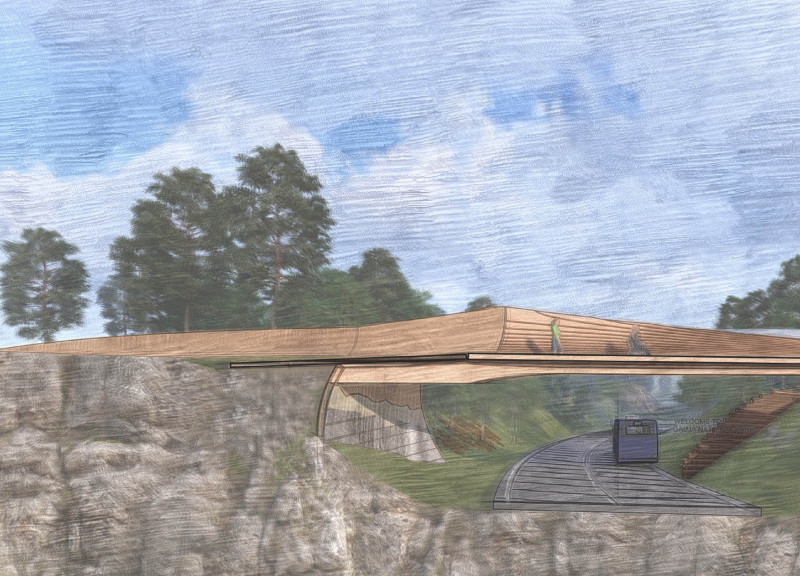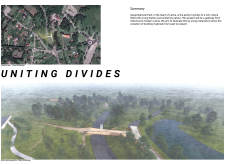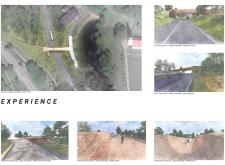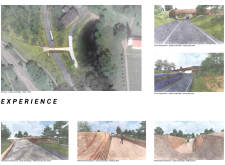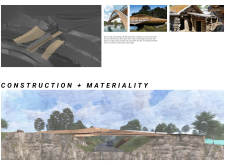5 key facts about this project
The Gauja Footbridge is situated in Gauja National Park in Latvia. It serves as a link between historical and contemporary elements, enhancing the connection to the area’s cultural and natural landscape. Designed with the theme of "Uniting Divides," the bridge offers an experience that encourages visitors to engage with their surroundings, while also reflecting the rich architectural history of Latvia.
Structural Design and User Experience
The design addresses both drivers and pedestrians, providing distinct perspectives. For drivers, the footbridge marks an entry point to the park, ensuring easy access for visitors. Pedestrians experience the bridge differently, as each step reveals the natural beauty around them, making their journey a part of the overall experience.
Historical Context and Materiality
A notable aspect of the bridge is its East side, which demonstrates the evolution of wood construction. This section of the bridge connects to the Araisi Archaeological Museum, featuring hand-cut rough wooden members that echo traditional practices. The design pays homage to Latvia’s architectural heritage while inviting reflection on the past.
Modern Construction Techniques
Alongside traditional elements, the bridge incorporates cross-laminated timber (CLT) as a modern structural material. This approach combines strength with a clean appearance. The use of CLT alongside historical wooden features highlights the project’s focus on the evolution of building methods, creating a narrative of progress in architecture.
Unique Design Features
Attention to detail is crucial throughout the design, allowing different construction methods to collaborate visually. This aspect fosters a conversation between the built environment and the natural setting. The bridge captures the relationship between history and modernity, creating a space that invites reflection and exploration while honoring the story of the land.


